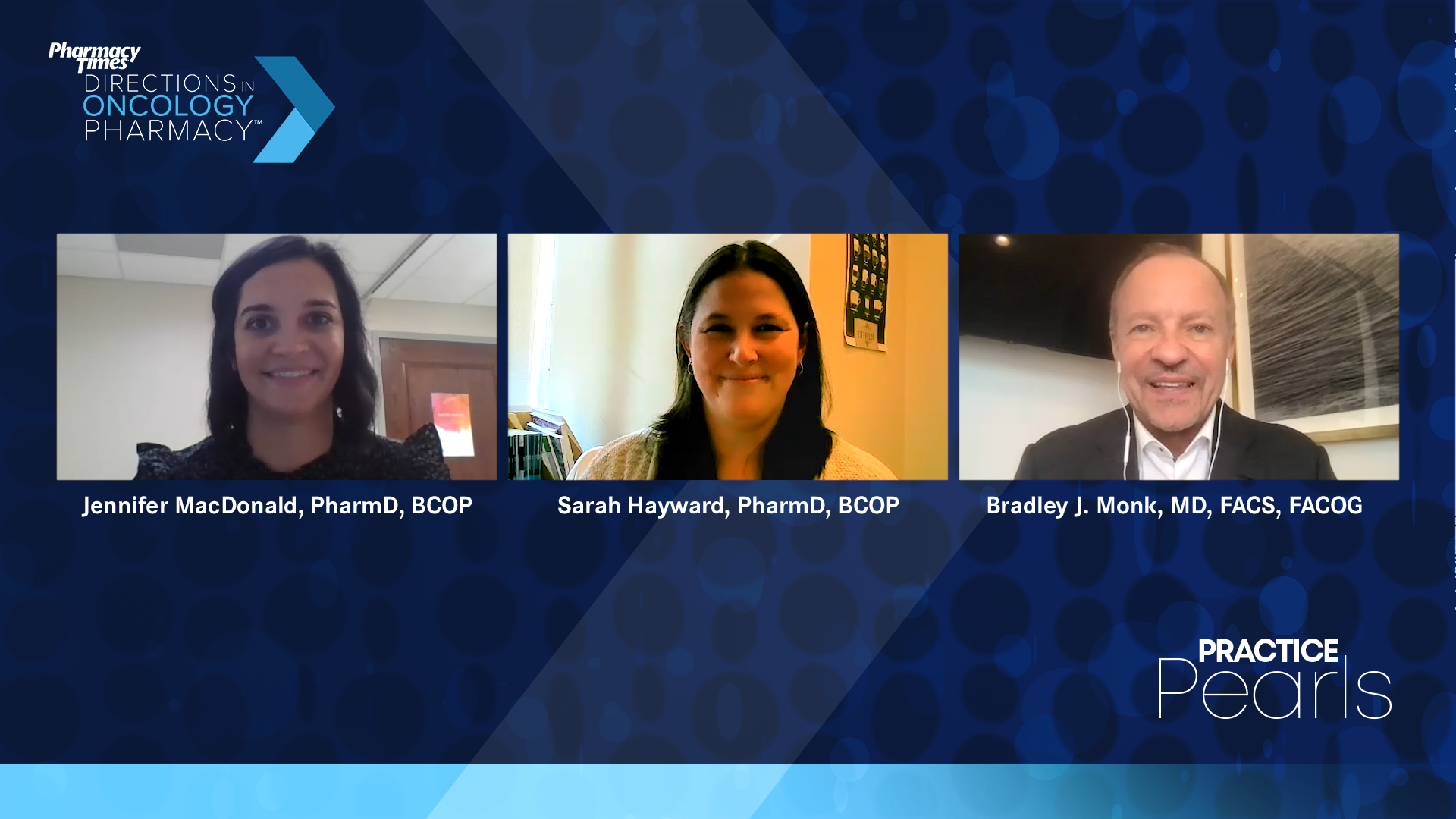Jennifer MacDonald, PharmD, BCOP: The last thing we wanted to wrap up on is something we talked about. Sarah, can you explain how you help patients get into assistance programs for one of these therapies in an era where you’re trying to be profitable? NCCN [National Comprehensive Cancer Network] did really well with these blocks to also include the cost in things. But what resources do you use for patients for that as well? And then we can conclude.
Sarah Hayward, PharmD, BCOP: Thank you very much for asking. This is a very important part. Another very important part of educating the patient is telling them what the expectations are and how they should go through this process. I can tell you what we do here at the Stephenson Cancer Center, because that’s obviously what I know, and it’s probably replicated in a lot of other centers. Once we send out that prescription and approve our pre-authorization—they’ll all need pre-authorization, that’s exactly what it is—just because it’s approved doesn’t mean the co-payment share will be low. He can still come back with a $2,000 co-pay, even if they get full FDA approval. [Food and Drug Administration] indication for their olaparib [Lynparza] or whatever the PARP.
We have a team of pharmacy technicians who help our patients through various drug assistance programs whether through private foundations. There are foundations that offer medication assistance programs specifically for patients with ovarian cancer. Are there funds available there that you can get this patient approved for? Additionally, all manufacturers of these PARP inhibitors have patient assistance programs. Our technicians work with a patient to complete this paperwork and obtain the income information needed to get that patient the approved medication they need and hopefully serve them well. Apart from this, we have also recently been able to create our own in-house specialty pharmacy assistance fund for patients who have excessively high co-payments if we have no other options.
It’s having a team within the pharmacy. Within our specialized pharmacy, we have 4 technicians. Their job is to help with these pre-authorizations and to help us start these patient assistance programs. They are worth their weight in gold to help these patients get what they need. That’s our approach: foundation support, free drug assistance programs through the manufacturer, and then any in-house subsidies that some specialty pharmacies might be able to provide. Ultimately, if you can’t do any of this, switch PARP inhibitors.
Bradley J. Monk, MD, FACS, FACOG: It’s so smart. However, the co-pay on a clinical trial PARP inhibitor is still $0.
Sarah Hayward, PharmD, BCOP: True.
Jennifer MacDonald, PharmD, BCOP: Yes. That’s a great point. Sarah, some of the programs you mentioned, especially the private ones, could be full by February or March, where they’re not even available.
Sarah Hayward, PharmD, BCOP: You need to check them all year round. “Is it open now?” Are there funds now? You never know, so having a group of people who specialize in this is fantastic.
Jennifer MacDonald, PharmD, BCOP: Yes. It always comes back in December when they are at the clinic. They say, “I have to re-register for the program I’m attending. Can you help me ?
Sarah Hayward, PharmD, BCOP: January is coming. All the papers are coming for the 2022 re-registrations.
Jennifer MacDonald, PharmD, BCOP: To the right. And the other thing we’re doing here that you brought up is we have this fund that the cancer center basically does as long as we get reimbursed for the cost of the drugs we’ll waive their co-pay for them . A lot of cancer centers are doing things very similar to this. We’re okay with not making a profit until we lose money. It suits us perfectly. We do very similar things like that. When patients have cancer, I tell them all the time, “You’ve paid into insurance or whatever pretty much your whole life. Please don’t spend your savings, your 401k, all on these therapies. Let’s find a way to make it cheaper.
Sarah Hayward, PharmD, BCOP: Absoutely. And that can apply to so many drugs beyond oncology drugs or PARP inhibitors. So many of our patients are on apixaban [Eliquis] for their anticoagulant. It’s the same scenario. We have a lot of very high quotas. You have to be able to work with the system and give them the help they need, because they need the drugs.
Jennifer MacDonald, PharmD, BCOP: Definitively. I want to thank you both for allowing me to moderate and be part of this discussion. As Dr. Monk said, it was very instructive. I learned a lot during this discussion, and I hope our audience did too. We hope you found this pearly and practice-changing. PARP inhibitors for ovarian cancer that work in gynecologic oncology have been for us. We hope you can take a few things from this discussion and incorporate them into your practice and use them in the future to help patients. Thank you all.
Bradley J. Monk, MD, FACS, FACOG: Thanks, Jenn. Glad to see you, Sarah.
Sarah Hayward, PharmD, BCOP: Thanks, Jen and Dr. Monk. Have a nice day.
Transcript edited for clarity

